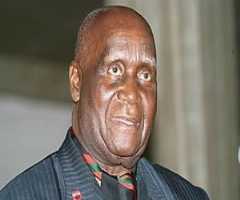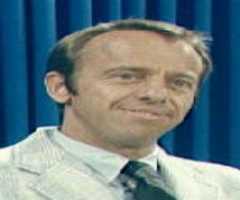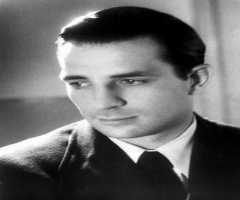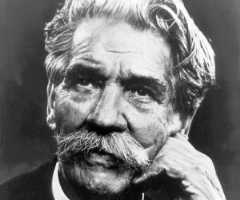Salmon P Chase Biography, Life, Interesting Facts
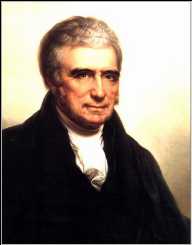
Birthday :
Died On :
Also Known For :
Birth Place :
Cornish, New Hampshire, United States of America
Zodiac Sign :
Salmon P Chase was an American political figure who is best known for serving as United States Secretary of the Treasury under Abraham Lincoln and being Chief Justice during the impeachment proceedings against Andrew Johnson.
Childhood and Early Life
Salmon P Chase was born on 13 January 1808 in Cornish, New Hampshire. His parents were Janet Ralston and Ithamar Chase. Chase was one of ten children. His father died in 1817 and Chase was sent to live with his uncle, Philander Chase, who was an Episcopalian bishop in Ohio. Chase also had an uncle in politics, Dudley Chase who was a senator for Vermont.
Chase studied in numerous states as he moved about during his childhood, he received schooling in Windsor, Vermont, Worthington, Ohio, and Cincinnati. He also studied at Dartmouth College and graduated in 1826 with distinction. He moved to the District of Columbia and began studying law under the United States Attorney General, William Wirt. While in the District of Columbia studying, Chase also opened and ran a classical school having taught in Vermont.
In 1829, Salmon P Chase was admitted to the bar. Following this, he returned to Ohio and practiced law out of Cincinnati. Chase was a firm believer in abolition and spent much of his legal time defending runaway slaves. He quickly garnered a reputation and argued before the United States Supreme Court against the constitutionality of returning runaway slaves to their masters. His stance on such matters led him to become entangled in politics inevitably.
Career
Salmon P Chase first joined the Whig Party and was elected as a Whig representative to the Cincinnati Council. The Whigs were pro protectionism and Congress but split on the issue of slavery. Chase left the party in 1841 and joined the Liberty Party and became its leader in Ohio. The party was abolitionist in its outlook. Chase became prominent nationally with his leadership of the Liberty Party and was vital in joining Martin van Burren’s party to form the Free Soil Party in 1848.
Chase drafted the policies of the new party and campaigned for Martin van Burren during the 1848 presidential election. The party secured ten percent of the vote on its platform of preventing the spread of slavery into the western territories. Chase himself was elected as a senator from Ohio in 1849 on a Free Soil platform. Chase hoped to impress upon northern Democrats the need to oppose slavery.
However, following the 1850 compromise and the Kansas Nebraska Act he seemed to abandon hope of influencing the Democrats. The Compromise of 1850 saw many territories reorganised to placate slaveholding states. California was granted statehood as a free state, but slavery was not outlawed in the other provinces and they were allowed to decide their status. The right to popular sovereignty on the issue of slavery led to violence with the creation of the states of Kansas and Nebraska as settlers from both sides poured in to influence the vote. Violence erupted in Kansas and marked a prelude to the American Civil War.
Having seen the Democrats allow these issues to pass Salmon P Chase set about setting up a new party with other abolitionists. The new party would draw from the Free Soil Party, the Whigs and some northern Democrats. The new party became the Republican Party. Chase was elected governor of Ohio in 1855, making him the state’s first Republican governor. He pushed women’s rights and prison reform during his time as governor.
In 1860 Salmon P Chase sought the Republican Party nomination for president. He failed to garner much support outside of Ohio and later endorsed Abraham Lincoln when he secured the nomination. He was re-elected as a senator but resigned to take up the position as Secretary of the Treasury. In 1861, Chase was part of the Peace Convention which aimed to prevent the outbreak of civil war. At this time it was clear the Southern ‘Cotton States’ were intent on succession and the convention focussed on retaining the remaining slaveholding states within the Union.
The convention ultimately only offered to protect slavery where it already existed, and it would not enforce its extension into the new territories. Chase during his time as Secretary of the Treasury oversaw the creation of a national banking system and paper money. The idea of paper money was mainly Chase’s. He felt it provided the country with a stable and uniform currency and allowed the government to sell debt. These were important measures during the Civil War as the government could sell war bonds to raise money.
Salmon P Chase also designed the new currency and placed his portrait on the new one dollar bills. Chase also was responsible for the addition of the phrase, In God we Trust, on American coins. Chase also accompanied Federalist Troops on a scouting mission that ultimately led to the capture of Norfolk. Chase though eventually used his position to build his political support as he sought another presidential run. He threatened to resign his position repeatedly to put pressure on Lincoln.
However, once Lincoln secured the presidential nomination for 1864 he accepted Chase’s resignation. This removed a problematic member of the cabinet but to placate Chase’s radical supporters he was offered a position on the United States Supreme Court. Chase replaced the pro-slavery chief justice, Roger Taney. Chase admitted John Rock as the first black attorney to argue in front of the Supreme Court. The most notable event of Chase’s time as Chief Justice was presiding over the impeachment trial of Andrew Johnson.
The trial saw eleven charges brought against the president, but all failed to secure impeachment by a single vote. Salmon P Chase continued to seek the presidency and joined the Democratic Party, but they refused to nominate him due to his support for black voting rights. He then helped found the Liberal Republican Party but was again unsuccessful in securing a presidential nomination.
Personal Life
Salmon P Chase married his first wife, Catherine Garniss, in 1834. The marriage only lasted until 1835 as Catherine died giving birth to their daughter. The death of his wife led to Chase becoming more involved in the Episcopalian Church and the abolitionist movement. In 1839, Chase married Eliza Smith. Together they had three children. The marriage ended in 1845 when Eliza died of tuberculosis.
In 1846, Salmon P Chase married Sarah Ludlow. Sarah died in 1852. As well as outliving his three wives, Chase also survived all but two of his children. He was a Freemason. He died in New York on 7 May 1873.
Awards and Achievements
Salmon P Chase appeared on the 10,000 dollar bill between 1928 and 1946.
More Politicians
-
![Algirdas Brazauskas]()
Algirdas Brazauskas
-
![Kenneth Kaunda]()
Kenneth Kaunda
-
![Tunku Abdul Rahman]()
Tunku Abdul Rahman
-
![Harry Hopkins]()
Harry Hopkins
-
![J. R. Jayewardene]()
J. R. Jayewardene
-
![Patrice Lumumba]()
Patrice Lumumba

